In this article we will help you understand the different evenweave fabrics available to make your cross stitch project exactly what you want it to be after you have invested your time and money in your project.
There is quite an assortment of evenweave fabrics available for cross stitch, and they come in assorted colors and thread count. Evenweave fabrics have the same number of stitches vertically and horizontally so that when you are making cross stitches, each “x” will be the same height and width. It is important to know in advance how you are going to use your completed piece so you can choose the right fabric.
Aida cloth
Aida cloth is an even-weave fabric traditionally used for cross-stitch embroidery and is the most popular cross-stitch fabric. The threads are woven in groups and are separated by tiny holes. This creates a pattern of squares across the fabric surface that a beginning cross stitcher can easily follow. It is manufactured in various thread counts, the most popular being from 11 count to 18 count. It comes in various colors, with white and ecru being the most common.
Aida cloth has a tendency to fray, and the edges should be treated in some way before use. Serging, zigzag stitching, masking tape or using Fray Check on the edges is a good way to avoid fraying and takes very little time.
One drawback of Aida cloth is that the woven blocks are obvious in the background of a design. If the fabric is visible around the design of the finished piece, another fabric would be more appropriate. If the pattern is designed to cover the entire area with no visible fabric showing, then Aida cloth is a very good choice.
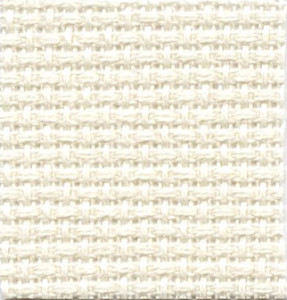
Hardanger
Hardanger and Oslo Hardanger, are 100% cotton evenweave fabrics and lend themselves well to cross stitch as well as hardanger work. Hardanger cloth only comes in 22 threads per inch, but there are a variety of colors to choose from, and the holes are less obvious than in Aida cloth. This is an excellent choice of fabric if you want a smaller stitch count while still using two strands of floss.
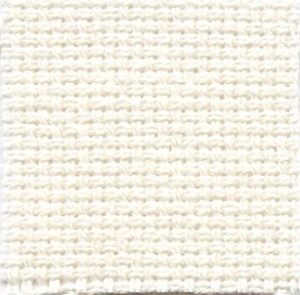
Lugana
Lugana is an evenly woven cross stitch fabric of 52% cotton and 48% viscose (made from wood pulp and is a type of rayon). It is manufactured in 20, 25 and 28 counts per inch and comes in various colors. The 20 count Lugana can be used with two strands of floss, and the 25 and 28 counts require only one strand of floss. The higher counts with one strand of floss make beautiful finished projects, but a magnifier is recommended when working on them. The higher counts (25 and 28) can also be done by crossing over two threads instead of one, making your finished project either 12+ or 14 count. You would then use two strands of floss.
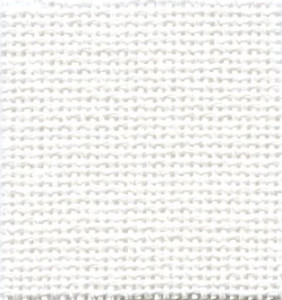
Jobelan
Jobelan is an evenly woven cross stitch fabric made from 51% cotton and 49% modal. Modal is a processed bio-based textile made from reconstituted cellulose from the beech tree and is considered a type of rayon. It is a soft 28- or 32-count evenweave with a slight sheen. These higher counts require only one strand of floss and make beautiful finished projects, but a magnifier is recommended. Jobelan can also be used by crossing over two
threads instead of one, making your finished project either 14 or 16 count. You would then use two strands of floss.
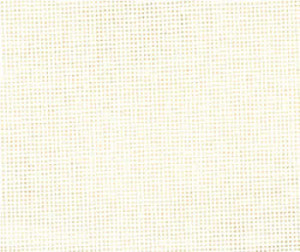
Linen
There are several types of evenweave linen. The most popular are Belfast, Cashel, Dublin and Edinburgh. They come in counts of anywhere from 25 to 36 threads per inch. They are beautiful fabrics and are a nice background for designs that will have area showing around the design when finished. Linens are almost always stitched over two threads with two strands of floss. They are more expensive than other evenweave fabrics.
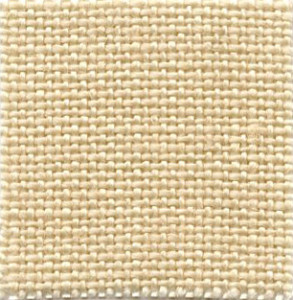
This is a listing the most popular and most available fabrics used for cross stitch. There are other evenweave fabrics that have other fibers and designs woven into the fabric. You can explore these further by going to the Charles Craft or Zweigart websites.
Do not wash or preshrink your evenweave fabric before stitching or while you are working on your design. Aida cloth naturally contracts in areas where it is stitched. When you wash your finished project, you will want the fabric and floss to blend and shrink in a natural and consistent manner, and this will improve the appearance of your finished project.
Whatever fabric you choose, be sure to finish the edges before you begin so your fabric doesn’t fray.

Pingback: Serenity Stitchworks Blog – Tips for a Beautiful Cross-Stitch Project